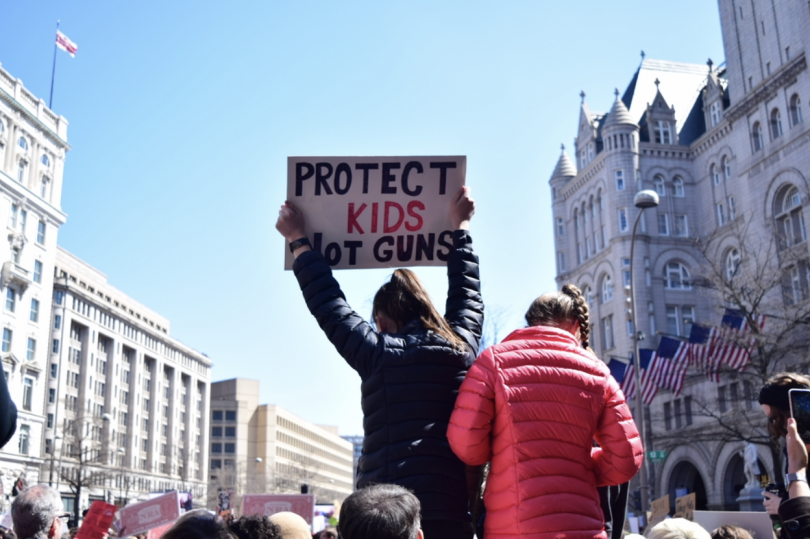by Jane Ellen Stevens
Editor’s Note:
It’s encouraging to hear today that a bipartisan group of 20 Senators, made up of ten Republicans and ten Democrats, say they have reached a deal on a package of gun-safety and related measures, which are narrowly focused on preventing future shootings such as the devastating massacre on May 24, at Robb Elementary School in Uvalde, Texas, where 19 children, and two teachers were murdered.
But, as this essay below by Jane Ellen Stevens reminds us, sensible gun regulations are only one part of what is needed to address our nation’s mass shooting problem.
So read on.
When ACEs lead to violence
Thousands of parents, pediatricians, social workers, educators, community advocates, kids, judges, police, and district attorneys know exactly what led to Salvador Rolando Ramos running into a school and slaughtering 19 kids and two teachers in Uvalde, Texas. And they know what could have derailed his path, as well as the path of all other recent mass shooters
To people educated about the consequences of too many childhood adversities and too few positive experiences, what happened in Uvalde is not a mystery.
Here is what research has established:
- Adverse childhood experiences (ACEs) are the root cause of most of our economic, social, physical and mental health issues.
- People with more than four types of ACEs and few positive childhood experiences have an extraordinarily high risk of violence as both victims and perpetrators, along with a high risk for cancer, heart disease, mental illness, alcoholism and drug use, and dying prematurely.
- What’s an ACE? The 10 ACEs in the original CDC-Kaiser Permanente Adverse Childhood Experiences Study include physical and emotional abuse, physical and emotional neglect, sexual abuse, a parent who is addicted to alcohol or other drugs, a parent who is depressed or mentally ill, a mother who is abused, an incarcerated family member, divorced or separated caregivers. More than 30 other ACEs have been added since the 1998 study, which include bullying, racism, community violence, and homelessness.
- People who are denied economic stability, adequate housing, education and wealth because of local, state and federal policies (a.k.a., ‘being poor’) are burdened with the highest ACEs, but have fewer resources to mitigate toxic stress stemming from ACEs. In the U.S., inequities are compounded by racism affecting people of color and other minorities. But as the last three weeks of shootings show, everybody has ACEs or is affected by them.
Ramos had, at minimum, five types of childhood adversities that lasted for years. He experienced extreme bullying, an abusive relationship with his mother, his mother’s reported substance abuse, an absent father; and a disability (stuttering, lisp) for which kids taunted him mercilessly. We know little about his early childhood, where more ACEs may be lurking.
A child that experiences toxic stress from ACEs exhibits a fight, flee, or freeze response. Ongoing toxic stress damages kids’ developing brains, and leads to them to exhibit coping behaviors, such as engaging in violence. Ramos coped with his distraught feelings by harming himself (he cut his face repeatedly with a knife), and violence, including fighting often with peers.
Of the seven positive experiences that research shows can ameliorate ACEs, Ramos apparently had only two: neighbors who cared about him and, until a while before the shooting, friends. There are other things that might have prevented him going on a shooting rampage, among them the ability to talk with his family about his feelings, feeling as if his family stood by him in tough times, some kind of regular participation in community, a sense of belonging in high school, and feeling safe and protected by an adult in the home. But Ramos appears to have had none of those mitigating factors.
Over his short life, which seemed to be one continuous downward spiral, there were many opportunities to intervene and change the trajectory of this unhappy and angry youth.
Any of his teachers in elementary, middle school and high school could have intervened. His behavior and that of his peers, even in elementary school, would have indicated he was troubled. The schools could have integrated anti-bullying programs. The friends he had could have alerted a counselor or a member of the clergy. The police officers who were called to his home could have arranged for a social worker to visit Ramos and his mother. Some of the reported 40 percent of the Uvalde city budget spent on the police department could have gone to training police in trauma and resilience-informed practices, and hiring social workers.
Experienced teachers, cops, social workers, and members of the clergy will tell you it’s easy to spot a troubled kid. But if people who work with children don’t have a solid education about the effects of toxic stress from ACEs on a child’s brain and body (this is the WHY a child acts out), if they don’t have trauma and resilience-informed programs at their fingertips (this is the HOW to help that child), they don’t know what to do.
The current default response to a kid who’s fighting, sleeping in class, or crawling under a table in fear is: “What’s wrong with you?” followed by some form of blame, shame and punishment. The response that has been shown hundreds of thousands of times to turn around a kid’s behavior is, “What happened to you?” followed by understanding, nurturing and healing.
Schools, police departments, courts, and faith-based organizations are integrating practices and policies based on the science of positive and adverse childhood experiences, with remarkable results:
- In thousands of schools that integrated trauma-informed practices—including schools in Antioch, CA, Suisun City, CA, San Francisco, CA, Spokane, WA, San Diego, CA, and Walla Walla, WA—suspensions and expulsions have dropped or been eliminated, while grades and graduation rates increase.
- Safe Babies Courts show that one year after participating 99% of the children suffer no further abuse.
- Batterer intervention programs that have integrated ACEs science reduce recidivism from 30–60% to just 1%.
- Plymouth County, MA, combines law enforcement, rehab centers, and hospitals in a joint cross-sector program that has resulted in a 26% drop in opioid deaths v. an 84% increase in deaths in surrounding counties.
Some experts say a child needs only “one caring adult” to help them succeed. But this works only if all of our systems—education, faith-based, justice, etc.—educate their staff about childhood adversity and implement trauma-and resilience-informed practices to create an environment where most adults are a “caring adult.” Otherwise, the likelihood of a troubled child being lucky enough to run across that one caring adult who can help them is slim. For a child with an overwhelming amount of childhood adversity who needs many caring adults, as was the case with Ramos, the chances are still slimmer.
Obviously, not every child overburdened with adversity and with few positive experiences ends up shooting people. Most don’t. The damage done to their brains and bodies manifests in other ways, such as chronic illness, addiction, divorce, and a myriad of other maladies. (PACEs Science 101.) ACEs are not destiny. If children understand that the adversity they experience is not their fault, that they had no control over that adversity, that the way they cope (fighting, smoking, drinking, thrill sports, etc.), is a normal response, if they are not taught otherwise, and that they can heal…this provides all of us with hope.
But when there’s not sufficient intervention, as happened with Ramos, and he expresses his childhood adversities through violence. And if, added to everything else, we make it easier for him to buy an assault rifle than a pack of cigarettes, then we have failed. We have failed Ramos, failed the 19 children and two adults he killed, the people he injured, their families, the community and the millions deeply affected by their deaths.
I didn’t write this to excuse his actions of Salvador Rolando Ramos. They are indefensible. I write today to urge us to understand him so that we can make sure communities derail other kids from the path taken by Ramos. Because if we know nothing else, we know this: There will be more.
This essay was first published by our friends at Aces Two High News.
Author Jane Ellen Stevens is the editor of ACES Too High, and founder and publisher of PACEs Connection.

If you’re interested in becoming involved in the PACEs science community, join our companion social network, PACEs Connection. Go to PACEsConnection.com and click “Join”. PACEsConnection.com is the leading advocate for information about the science of positive and adverse childhood experiences (PACEs) and the rapidly expanding, global PACEs science movement.


Well researched and a story more people need to read. Thank you
Indepth story, I urge Witness LA to seek out and report the Tyree Maurice Burris-Hunt story.
I am a man that experienced violence & death throughout my childhood which seemed to began as early as 5 years old with the death of my father’s sister followed by the death of my father at age 7 due to a hit & run. It changed the dynamics of what was a tremendously close knit family. From that point family funerals became a constant event in my life and has continued to the present day.
I read where you wrote that some experts say a child needs only “one caring adult” to help them succeed. I felt I was surrounded by many until I received several enormous Trusts and was admin. several estate Wills in Cleveland County NC and Arkansas about June of 2013. Unbelievably it included my father’s and grandparents assets held in trust for over 30 years. Unfortunately it two was surrounded in agony & turmoil because I found out I had been adopted. Oddly the aunt & father I cried over was actually my older brother & sister, my grandparents were actually my parents well atleast my grandfather was, my grandmother was my step mom.
During this I found out another aunt on my adoptive mother’s side was actually my mother.
The amazing thing is her dad was a billionaire Trucking mogul whom bequeathed me his estate.
I was immediately shuffled into the life of a billionaire but was surrounded by family whom treated me like a stranger to be exploited after they learned of my adoption. I became a victim of domestic violence as a 40’s man. Being truamatized, mentally & physically by relatives & associates whom was informed the only way that could take control over the assets was by my incompetence or death. I was repeatedly forced into mental institutions after being drugged tranquilized and videoed. Law enforcement and my associates corrupted by the mob of relatives and businesses partners seeking to gain control.
Well wishes for the PACES project. I plan to donate…
Obvious he wasn’t to economically disadvantaged. He had over $5,000 worth of firearms and a truck. How did he afford this on a part-time McDonalds job?
Reminds me of fed agents giving money and guidance to certain committee members to commit crimes.